Bouncers Safe for 3 Month Old if used properly and for short periods. Always supervise your baby while in a bouncer.
Baby bouncers have become an essential tool for parents seeking a safe place to set their infant while they tackle other tasks. They’re designed to secure and gently bounce infants, providing sensory stimulation and a bit of entertainment. With features like calming vibrations, soothing music, and dangling toys, bouncers appeal to both a baby’s need for movement and play.
Parents must select a bouncer that’s age and weight appropriate for their 3-month-old, ensuring it meets current safety standards. Babies at this age lack full control over their movements and require a supportive, snug environment to prevent slumping or tipping. Just as important is the commitment to never leaving a baby unattended in the bouncer and restricting time spent in it to avoid overreliance or hindering physical development.
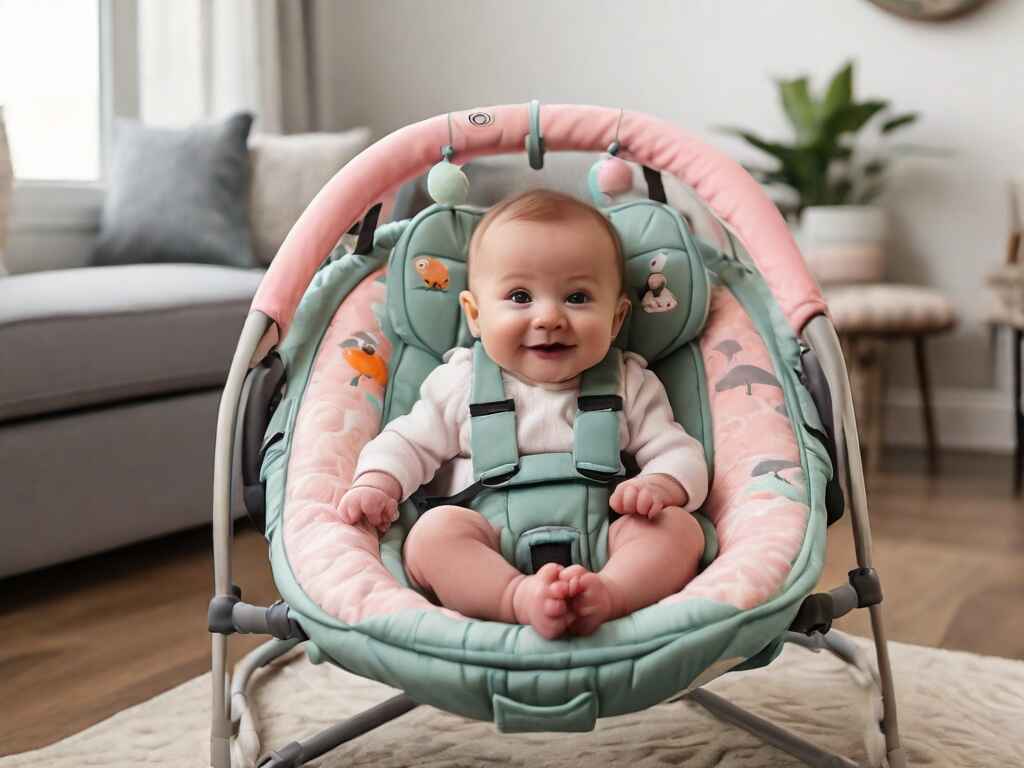
Understanding Bouncers
As a new parent, safety is a top priority. One question often arises: Are bouncers safe for 3 month old babies? This section is your guide to bouncers. You’ll learn what they are, how they work, and their pros and cons.
What Are Bouncers?
Bouncers are seats designed for babies. They have a slightly inclined position. Bouncers often come with fun features like vibration, music, and toys.
How Do Bouncers Work?
Bouncers use the baby’s natural movements to create a bouncing motion. This gentle motion can soothe and entertain babies.
Pros And Cons Of Bouncers
| Pros | Cons |
| Entertain babies | Time limits needed |
| Hands-free moments for parents | Can be overstimulating |
| Portable | Not for sleeping |
Remember, always monitor a baby in a bouncer. Keep bouncer sessions short. Make sure the bouncer is on the floor to prevent falls.
Safety Concerns
Parents often ask, “Are bouncers safe for 3 month old babies?” The use of baby bouncers sparks a blend of enthusiasm and worry. With proper guidelines and vigilance, risks can be minimized. Let us delve into age restrictions, potential safety hazards, and the relationship between bouncers and SIDS.
Age Restrictions On Use Of Bouncers
Baby bouncers are not one-size-fits-all. Age-appropriate use is vital for safety. Manufacturers often recommend waiting until a baby can hold their head up without support. This milestone usually occurs around 3 to 6 months. Always check weight and age guidelines on the bouncer’s label before use.
Potential Safety Hazards Of Bouncers
- Falls from improper restraint use
- Tipping due to over-enthusiastic bouncing
- Entrapment or suffocation risks
Secure harnessing is crucial to prevent falls. Position bouncers on the floor, not elevated surfaces. Monitor the baby’s activity to ensure safe play.
Risk Of Sudden Infant Death Syndrome (SIDS)
Bouncers can pose a risk for SIDS if used incorrectly. Supervised, brief periods in a bouncer are suggested. Babies should sleep on a flat surface without inclines. Remove a sleeping baby from the bouncer and place them in a crib or bassinet.
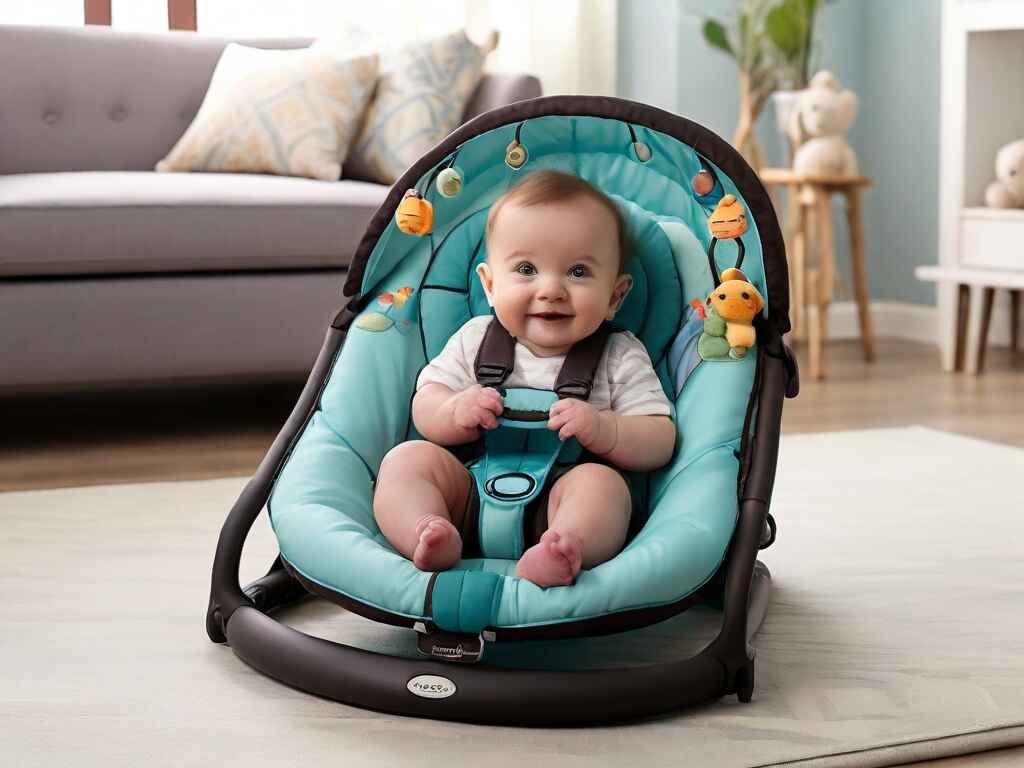
Types Of Bouncers
Welcoming a new baby into your home comes with countless decisions. One common query is Are bouncers safe for 3 month old? To address this concern, it’s crucial to understand the types of bouncers available. Each type offers different features and benefits. Selecting the right bouncer can contribute to soothing a fussy baby or even provide developmental benefits.
Basic Bouncers
Basic bouncers are designed for simplicity and ease of use. They typically have a gentle bouncing motion activated by the baby’s own movements. Covered in soft, comfortable fabric, they’re often lightweight and portable. Many parents find this ideal for newborns due to their snug fit and calming effect.
Rockers
Rockers offer a smooth, back-and-forth motion. They can be manually or battery-operated, providing a soothing experience reminiscent of being rocked in arms. These may boast additional features like music or vibrations. Benefits of using a baby bouncer like this include prolonged relaxation and sleep assistance for your little one.
Combo Bouncers
For versatility, combo bouncers blend the functions of a basic bouncer with additional features. Often transforming into a rocker or attached to a swing mechanism, these facilitate multiple motions. Parents value them for the developmental benefits, as they engage and entertain infants with toys and various sensory stimuli.
Doorway Jumpers
Doorway jumpers are designed to be suspended from a door frame, allowing a baby to use their legs to jump and bounce. They’re intended for babies who have developed neck control and can partially support their weight. Some parents believe that these jumpers can assist with strengthening leg muscles and are effective in soothing a fussy baby with a bouncer.
When choosing the best baby bouncer, it’s essential to consider the product’s recommended age range. It’s a way to ensure your baby reaps all the benefits of using a baby bouncer. Always check for secure seating, proper harnesses, and stability to confirm if bouncers are safe for 3 month olds. For parents grappling with colic, a bouncer’s gentle motion can be a valuable tool, as some evidence suggests that using a baby bouncer can help with colic.
Benefits Of Using Bouncers
As a new parent, you might ask, “Are bouncers safe for 3 month old babies?” Rest assured, when used correctly and within the manufacturer’s guidelines, bouncers can be a safe and valuable addition to your baby’s gear. Safety is paramount, so always monitor your baby and follow age and weight recommendations. Bouncers offer a host of benefits, from soothing your little one to aiding their development. Let’s dive into those advantages.
How Bouncers Can Help Soothe Infants
The gentle rocking motion of bouncers can mirror the rhythmic movements babies experience in the womb. This familiar sensation can calm and soothe a fussy baby, making bouncers an excellent tool for infants who need a bit of extra comfort.
Potential Developmental Benefits
- Visual stimulation: Colorful bouncers with hanging toys encourage babies to focus and track objects with their eyes.
- Muscle development: As infants kick and bounce, they strengthen their leg muscles, preparing them for crawling and walking.
- Motor skills: Reaching for and grasping toys can enhance hand-eye coordination and fine motor skills.
Assisting Parents With Daily Tasks
A safe bouncer grants parents a few hands-free moments to take care of daily responsibilities. Whether you’re preparing a meal, doing household chores, or taking a well-deserved break, a bouncer can securely entertain your baby while you manage other tasks.
| Tip | Details |
| Supervision | Always stay close and watch your baby while in the bouncer. |
| Time Limits | Limit time in bouncers to prevent overstimulation and ensure comfort. |
| Proper Use | Follow the product’s instructions for safe and proper use. |
| Flat Surface | Place the bouncer on a stable, flat surface to minimize risk. |
Remember, while bouncers can be beneficial, they are not substitutes for cuddling or one-on-one interaction. Use bouncers judiciously to enrich your baby’s world while ensuring their safety and well-being.
Alternatives To Bouncers
Parents often wonder, “Are bouncers safe for 3-month-old babies?” While bouncers can be fun, it’s vital to consider alternatives. The right substitute ensures the baby’s safety and development. Below, various options offer engaging, cozy environments without the bounce.
Swings
Swings can soothe a fussy baby with their gentle, rhythmic motion. Ensure they have secure restraints and a reclined position suitable for infants. Look for swings with adjustable speed settings. Always keep a watchful eye while the baby enjoys the swing.
Playmats
Vibrantly colored playmats stimulate the senses and encourage developmental milestones. They offer a safe space for tummy time, which is crucial for strengthening neck and shoulder muscles. Playmats come with textures and toys that enhance motor skills.
Babywearing
Babywearing keeps your little one close to your heartbeat, offering comfort. Choose a supportive carrier appropriate for a 3-month-old. It frees your hands and fosters bonding. Ensure that the baby’s airways are clear and the posture is right.
Traditional Rocking Chairs
Rocking chairs provide a calming experience that mimics the womb. Rock your baby gently in your arms, creating a peaceful, snug environment. A rocking chair is a timeless piece that brings warmth to any nursery.
Expert Recommendations
Young parents often wonder about the safety of using bouncers for their little ones. Safety comes first when considering any equipment for infants. Let’s explore what the experts recommend for using bouncers with 3-month-old babies.
Opinions of the American Academy of Pediatrics
Opinions Of The American Academy Of Pediatrics (AAP)
The American Academy of Pediatrics cautions on the use of bouncers. It highlights the risks of improper use. The AAP stresses the importance of supervision. They suggest that infants should not spend too much time in bouncers. Time should be limited to awake periods only.
Official safety guidelines from manufacturers
Official Safety Guidelines From Manufacturers
- Follow weight and size limits.
- Use safety straps at all times.
- Place the bouncer on the floor, never on elevated surfaces.
Advice from child development experts
Advice From Child Development Experts
Child development experts emphasize the need for tummy time. They advise against excessive use of bouncers. Bouncers should not replace crawling or personal interaction. Toys should encourage reach and grasp skills. Babies need a variety of physical activities.
| Activity | Recommended Duration |
| Tummy time | Multiple short periods daily |
| Bouncer time | Less than 20 minutes at a time |
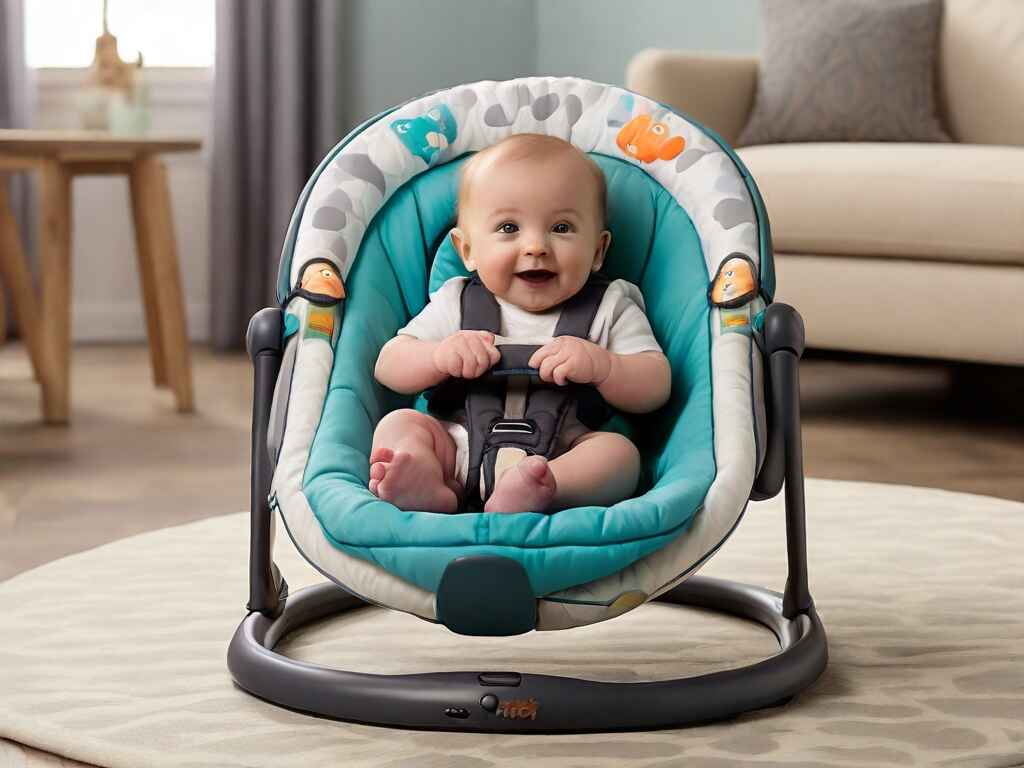
When To Use Bouncers
Welcome to our informative guide on bouncers and their safe usage for your little one. Understanding when and how to use a baby bouncer is crucial for your baby’s safety and comfort. Let’s dive into the specifics of bouncers for younger infants, especially at the 3-month mark.
The Appropriate Age For Bouncer Use
Are bouncers safe for 3-month-old babies? Yes, but with conditions. Manufacturers often recommend waiting until a newborn has adequate neck control. This usually happens around 3 to 6 months of age. Before using a bouncer, confirm your baby can hold their head up without support.
How Long Babies Should Spend In A Bouncer
- Short periods are key. Limit time to 10-15 minutes.
- Avoid extended use. Too long can affect development.
- Pay attention to baby’s mood. Remove them if they appear uncomfortable or fussy.
Best Times Of Day To Use Bouncers
Choosing the right time is important. Use a bouncer when your baby is alert and content, often after a nap or a diaper change. Avoid bouncer time right after feeding to prevent any discomfort or spit-up.
| Morning | After the first nap, when the baby is most energetic. |
| Afternoon | Following a diaper change or a playful bath. |
| Evening | As a calming prelude to the bedtime routine, but not immediately after feeding. |
How To Use Bouncers Safely
Bouncers offer a cozy spot for your 3-month-old to observe the world or drift away to dreamland. Used correctly, they can provide both soothing and developmental benefits. Let’s ensure you make the most of these perks while keeping your baby’s safety at the forefront.
Choosing The Right Bouncer
Best baby bouncers for newborns tick several boxes. Key features include:
- Sturdy, stable base to prevent tipping
- Comfortable and supportive seat design
- Adjustable safety straps
- Reputable brand with positive safety reviews
Take note of the weight and age guidelines to ensure the right fit for your baby.
Setting Up Bouncers Properly
Follow manufacturer’s instructions to set up the bouncer. Place the bouncer on the floor, away from hazards. Steer clear of tables and stairs to avoid falls.
Monitoring Infants In A Bouncer
Never leave a baby unattended in a bouncer. Monitor closely for signs of discomfort or attempts to wriggle out. Use the bouncer for recommended time periods only.
Cleaning And Maintaining Bouncers
Keep the bouncer clean to protect your baby’s health.
| Cleaning Task | Frequency |
| Wipe down frame | Weekly |
| Wash seat cover | As needed / Monthly |
Regular checks for loose screws and worn parts keep the bouncer safe.
Remember, bouncers are not for long-term use. They serve well for short periods offering the benefits of using a baby bouncer. They can even assist in soothing a fussy baby.
Developmental benefits of baby bouncers include: improved motor skills and visual stimulation. Also, some parents find bouncers effective for helping with colic as the gentle bouncing can calm a colicky baby.
Working With Your Pediatrician
As new parents, ensuring the safety of your newborn is a top priority. The question “Are bouncers safe for 3-month-old” often surfaces. It’s crucial to weigh in a medical expert’s advice. A pediatrician’s guidance can ably navigate you through the decision-making process. Here’s how working with your pediatrician ensures your baby’s safety and well-being.
Consulting With A Pediatrician Before Using A Bouncer
Before you introduce a bouncer to your baby, take a moment to consult your pediatrician. They can provide personalized advice based on your baby’s development stage and needs.
- Assess baby’s head and neck control
- Recommend age-appropriate bouncers
- Advise on proper usage durations
Determining Whether A Bouncer Is The Right Choice For Your Baby
A pediatrician is the best resource to determine if a bouncer suits your baby. Your baby’s individual development is unique, and choosing the right bouncer can be key to their enjoyment and safety.
| Milestone | Appropriate Bouncer |
| Head Control | Reclined Bouncer |
| Active Movement | Interactive Bouncer |
Addressing Any Safety Concerns With Your Pediatrician
Discussing any safety concerns with your pediatrician is essential. They can provide valuable insights on what safety features to look for and how to monitor your baby while in a bouncer.
- Check for safety certifications
- Understand proper strapping methods
- Learn about the recommended time limits
Real-world Experiences
Exploring whether something is right for your baby often means diving into real-world stories. With real-world experiences, parents can make informed decisions. Let’s hear from families who’ve used bouncers for their little ones.
Testimonials From Parents Who Use Bouncers
Many parents wonder, “Are bouncers safe for 3 month old babies?” To get to the heart of this question, let’s turn to stories from other families.
- Jane’s Story: “With our 3 month old, it’s all smiles. He loves the gentle bouncing!”
- Mike’s Insight: “Great for short periods. Keeps my daughter engaged and happy.”
- Sarah’s Point: “It’s a lifesaver when I need a moment, but I always watch her closely.”
Common Challenges Parents May Face When Using Bouncers
Safety and comfort are key for tiny tots. Even so, some challenges might arise.
| Challenge | Remarks |
| Overuse | Limit time to prevent over-reliance on the bouncer. |
| Supervision | Always stay in the room, ready to interact. |
| Proper Use | Ensure the bouncer is on a flat surface to avoid tipping. |
Tips For Maximizing The Benefits Of Bouncers
Get the most out of your baby’s bouncer with these handy tips.
- Observe Time Limits: Keep bouncer sessions short. Aim for 20 minutes.
- Mind the Weight Guidelines: Check the manufacturer’s recommended weight range.
- Engage without Dependency: Balance bouncer time with other forms of interaction.
What Is The Appropriate Age For Using A Bouncer?
Bouncers suit infants from birth to around 6 months old. Specifically, a 3-month-old can often use a bouncer safely if they have adequate head and neck control. Always follow the manufacturer’s age and weight recommendations.
Can bouncers cause developmental delays?
Can Bouncers Cause Developmental Delays?
Balance is key when using a bouncer. Excessive time may hinder motor skills development, as babies need floor time too. Yet, managed use won’t likely delay development. Consult with pediatricians for personalized guidance.
What safety features should I look for in a bouncer?
What Safety Features Should I Look For In A Bouncer?
Seek key safety features in a bouncer:
- Sturdy frame that doesn’t tip over
- Secure straps to hold baby in place
- Non-skid feet for stability
- Comfortable recline to support the back and neck
How long can my baby spend in a bouncer per day?
How Long Can My Baby Spend In A Bouncer Per Day?
Limited use is best. Ideally, keep sessions to 20-30 minutes and not more than twice a day. This safeguards against over-reliance and encourages a diverse range of movements and stimuli throughout the day.
Frequently Asked Questions On Are Bouncers Safe For 3 Month Old?
Welcome to our FAQs section where we address common concerns about baby bouncer safety. Parents often have questions about the right age for bouncer use, potential developmental impacts, safety features, and recommended usage time. Here we provide clear, concise answers to help ensure the well-being and happiness of your little one.
What is the appropriate age for using a bouncer?
Can I Put My 3 Month Old In A Bouncer?
Yes, you can place your 3-month-old in a bouncer with proper head and neck support. Always supervise and limit time to prevent overstimulation.
Can I Put My 3 Month Old In A Activity Jumper?
Most pediatricians recommend waiting until your baby is at least 6 months old before using an activity jumper, ensuring they have adequate head and neck control.
How Long Can A 3 Month Old Sleep In A Bouncer?
A 3-month-old should not sleep in a bouncer. Short naps under supervision are acceptable, but for longer or overnight sleep, choose a flat, firm surface.
When Should A Baby Not Be In A Bouncer?
Babies should not use a bouncer before they can support their heads, typically around 3-4 months, or after they exceed the weight limit. Avoid using a bouncer if your baby can sit up unaided, roll over, or climb out to prevent falls.
What Is The Recommended Age For Bouncer Use?
Bouncers are generally suitable for newborns from around 3 months up to 6 months, depending on the product and the baby’s development.
Are Baby Bouncers Developmentally Safe?
Baby bouncers can be safe if used responsibly and for short periods, encouraging natural movements and supporting your baby’s development.
Conclusion
Navigating the decision on whether bouncers are suitable for 3-month-old infants can be tricky. Safety and development are key factors to consider. Opt for a well-structured, age-appropriate model. Always supervise your little one. For peace of mind and baby’s well-being, consult with a pediatrician before use. Choose wisely for your child’s first adventures in motion.
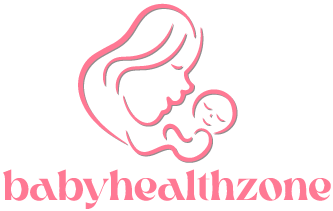
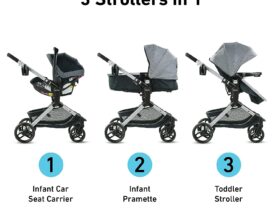
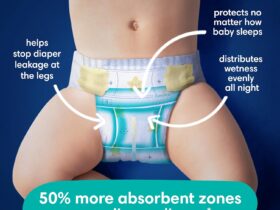



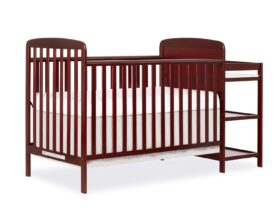
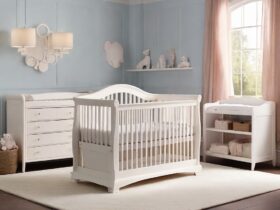
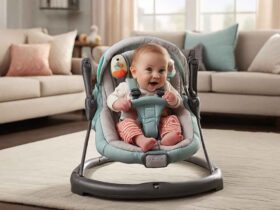

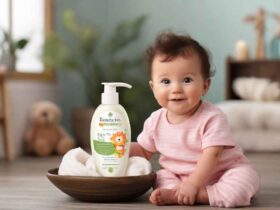
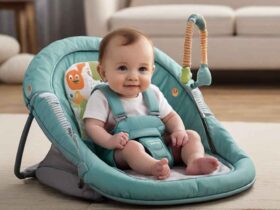
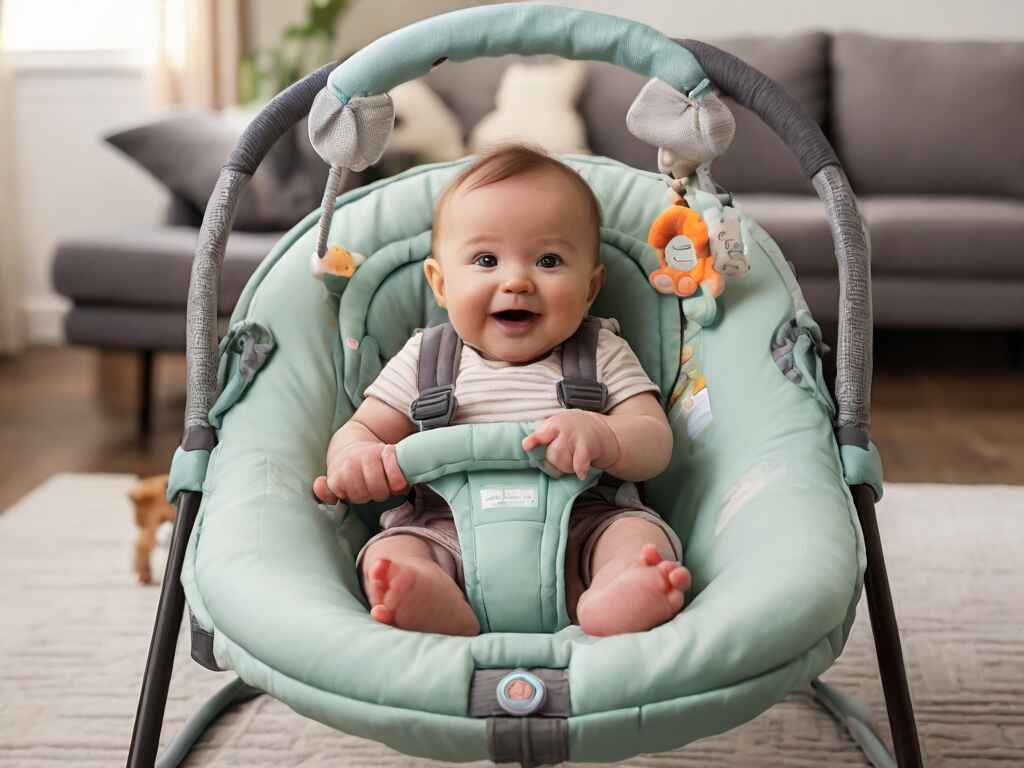
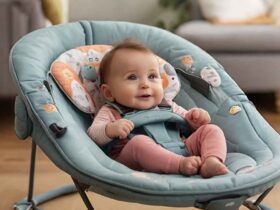
Leave a Review